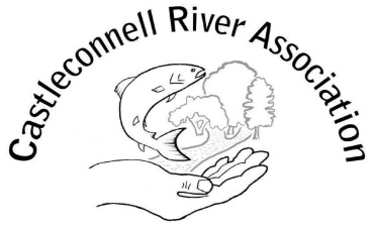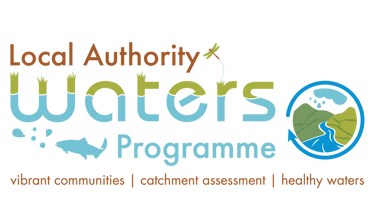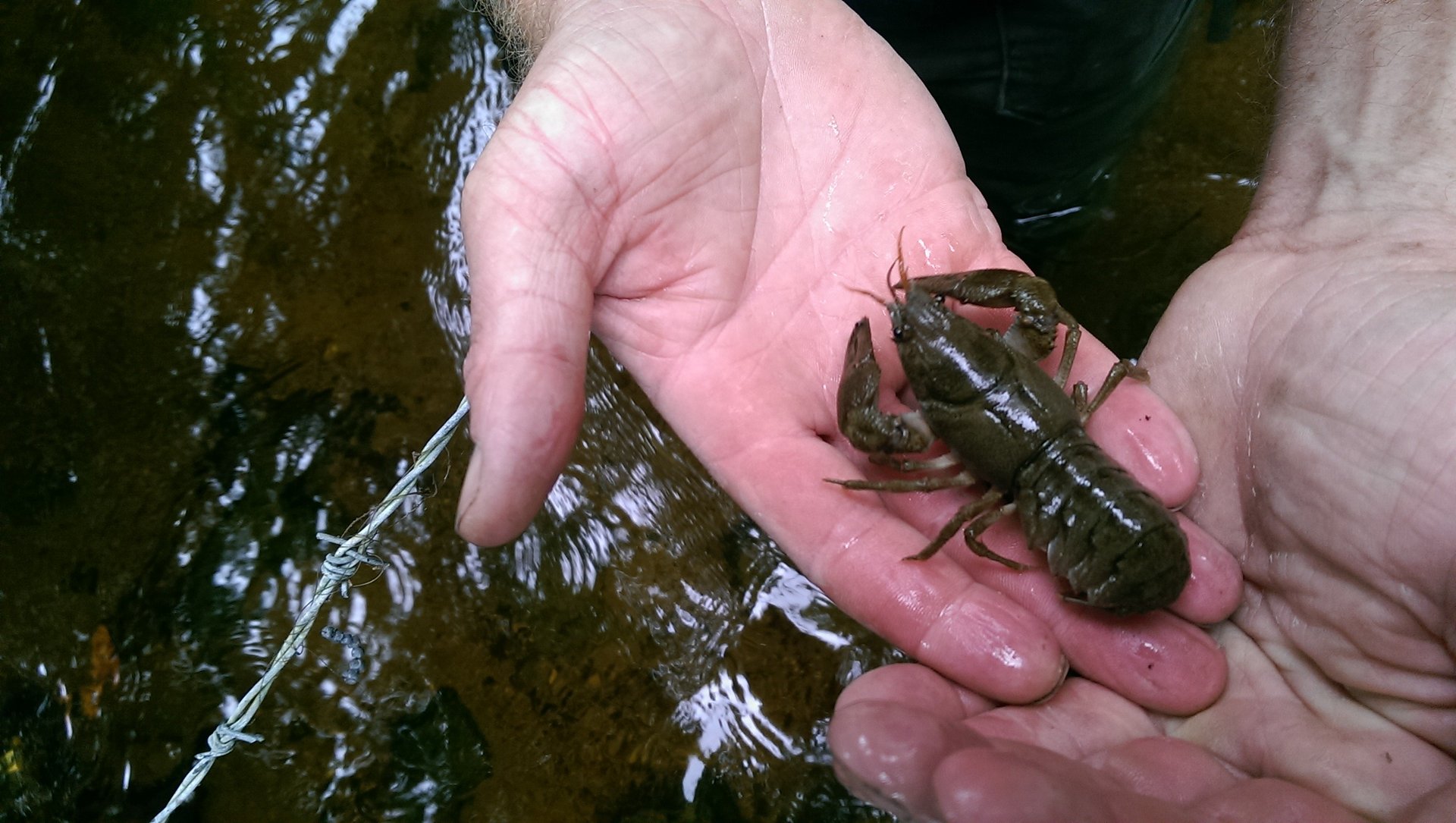
Biodiversity
Biodiversity and the Natural Food Pyramid
Biodiversity is a term that brings together the variety and inter-dependance of nature. Healthy biodiversity means that all natural environments are filled by a variety of different lifeforms which are able to survive in a range of different conditions. This gives rise to a robust food pyramid, where each level of life depends for food on the level below, and is fed upon by the level above.
In a stream, the lowest level of the food pyramid are the microalgae, mosses, fungi, lichens, bacteria (the perihyyton) that live on the stones and sediment, followed by larger waterplants and algae. These are fed upon by insect larvae and crustaceans, which are fed upon by bigger insects and birds and small fish, which are fed upon by bigger birds and bigger fish and small mammals (bats), which are fed upon by apex predators (like otters, eagles, humans). A diversity of life at each level of the food pyramid means the food pyramid is robust under varying conditions. A lack of diversity of life at any level of the food pyramid means the level above becomes overly dependant on too few species, and the system becomes fragile. Usually if any level of this food pyramid fails or is missing, the entire system breaks down. This is often caused by human intervention.
But what we unknowingly damage, we hopefully can repair once we become aware of the problem.
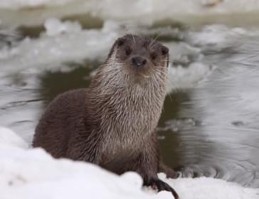

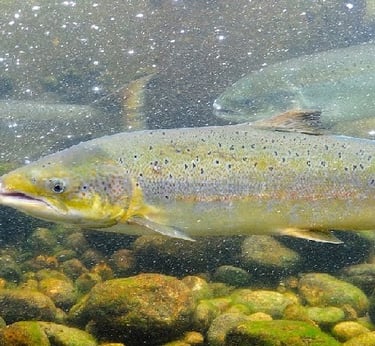

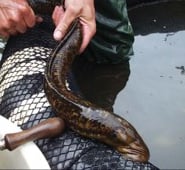

Protected Species
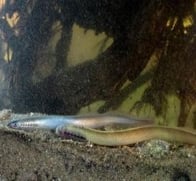

Eurasian Otter
Salmon
Sea Lamprey
Western Brook Lamprey
Animals: Eurasian Otter, Salmon, Sea Lamprey, Western Brook Lamprey, Stone Eel
How are these species protected?
Salmon in Europe are protected by a combination of international, EU, and national laws.
This includes the Habitats Directive which protects specific habitats and species, and the freshwater areas where they spawn.
Limiting the catch number of salmon prevents overfishing
Eurasian otters are also protected under the EU Habitats Directive which offers protection to otters and their habitats. Disturbing otters, especially during breeding or resting, is prohibited. Damaging or destroying breeding sites is also prohibited.
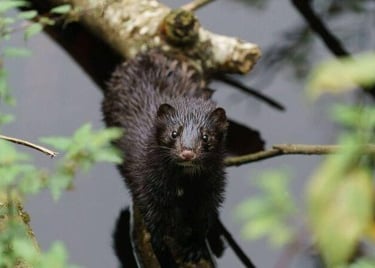

Invasive Species
Animals: Mink, dace, zebra mussel, quagga mussel, Asian clam, chub, Many other naturalised exotics can have a huge effect on native populations; examples are pike, rudd, roach, and cormorants.
Plants: e.g. Giant Hogweed, Japanese knotweed, Himalayan balsam, Skunk cabbage, Curly waterweed, Rhonodendron. Cherry laurel. Naturalised exotics that have a huge effect are sycamore, privet, heliothrope.
Pathogens: crayfish plague (100% deadly)
What can we do about invasives?
Trap mink
Never bring live fish away from a watercourse, and definitely never use live bait in fishing (it creates all sorts of irreversible problems)
Wash, let dry, and disinfect all wettable equipment when moving from one watercourse to another (especially landing nets, boats (plus trailers and motors), canoes, waders, wetsuits, etc)
Never bring water or plants or seeds (in pockets, clothing etc) from one catchment to another
Take best advice on eradicating each invasive plant, and keep doing it
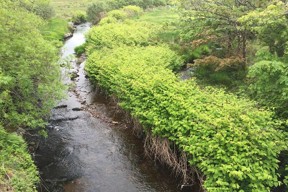

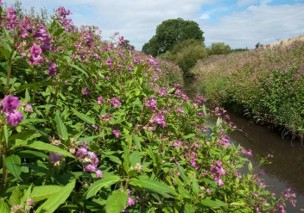

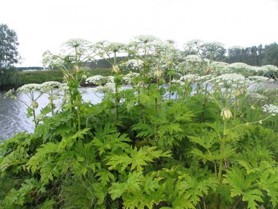

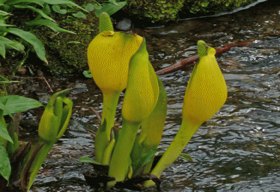

American Mink
Japanese Knotweed
Himalayan Balsam
Giant Hogweed
American Skunk Cabbage
Contact
© 2025. All rights reserved.
Supported and funded by
